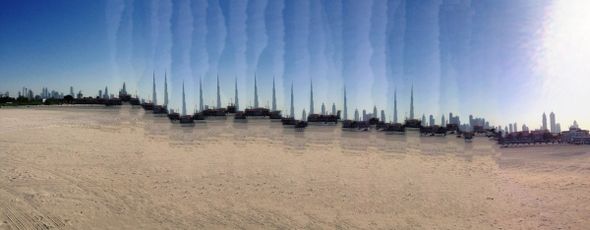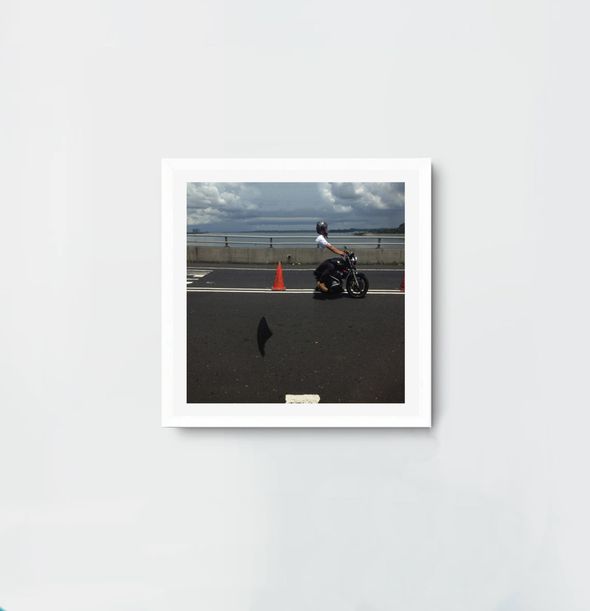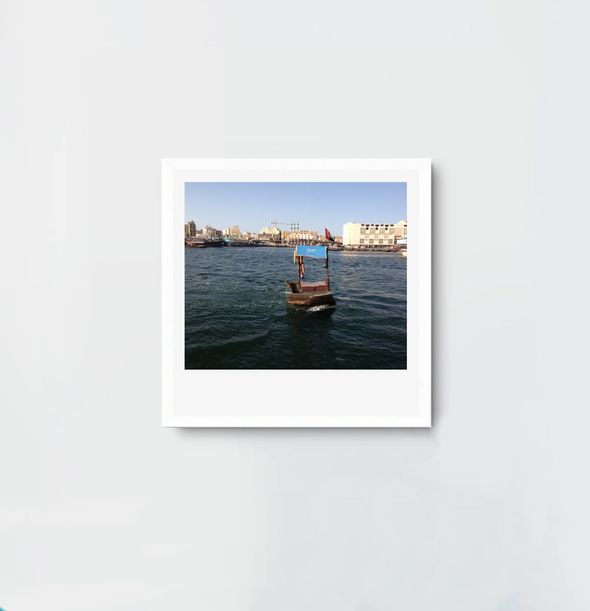Panorama Time @ SIGGRAPH conference
"Panorama Time" at the Science of the Unseen: Digital Art Perspectives, an exhibition of the Digital Arts Community of ACM SIGGRAPH conference, Anaheim, California, US, 2016.
---
PANORAMA TIME
Through our project “Panorama Time”, we discuss how to reach significant and aesthetically appealing but “broken” results through hacking the use of our everyday device – a mobile phone camera. In this project, we try to break the concept of the panorama, which might be referred to as an unbroken view in front of the viewer.
Digital photography is a unique technology that increasingly appears in our daily lives. Mobile phone cameras occupy our time without drawing any notice to possible dangers or loss of previous traditions, and all these new technologies are constantly opening up new, unmapped possibilities for us to explore.
As photography, in general, is a time- and space-oriented medium, we have chosen to focus on and examine it from this perspective. This project concentrates on a medium-based approach, so the medium’s features are enhanced and the work is produced with a focus on the specificity of the particular medium. By choosing a panorama mode, which simultaneously combines two slightly different techniques of one medium – still photography and cinematography (i.e., filming) – we expect to explore time and space in a particular way. In this application, time passes noticeably on the screen, and the user can control the process through the time-space dimensions by capturing what is relevant to that moment (by freezing the time-space moment), while also embracing the on-time construct controversially, for example, waiting for some scenes to pass without being captured (deleted from the final image). See Figure 1 for deleted parts of the photographed object and Figure 2 for the duplicated parts.
In this pictorial, we explore and shape our understanding of digital photography as an artistic practice to find new ways of expression and possibilities of tweaking time and space. We practice hacking of digital photography and try new ways to achieve expressive artistic results. Focusing on both artistic and technological discourses, we conducted practice-based experiments.
By hacking new technology and techniques, we explore the different ways in which hacking may act and create new aesthetics, even without knowing the structural components of them or how the hardware and software work. Consequently, we learn how the unknown world unfolds in action, and we may use those discoveries for our artistic and design purposes.
--
In our research, we label a passive and accidental glitch approach that results from malfunctioning or error – fault aesthetics, so it could be a printer’s physical distortion or photograph became a corrupted file through the physical act of removing a USB stick from the laptop. Glitch aesthetics results from more of a conscious act and from controlled settings, where the user knows what the process is, including both material conditions, like technologies, and the user’s artistry, ability and skills, and what the final result could be like and what effect brings a particular program. Data bending is one of those examples, where the artist plays with the material and the program, which provides particular instances for creating glitch aesthetics.
Iman Moradi describes visual glitch characteristics as follows: fragmentation, repetition, linearity, and complexity. Most of those characteristics our project contains, however, we argue that non-linearity is more apparent and important than linearity, and in our case, we aim for breaking linear view and linear way of thinking, both from time and space perspectives. If linearity is not that important in our work of glitch experiments, we argue that fragmentation and repetition come along with our practice. In the examples below, we show that fragmentation comes through the freezing the time and by that some frames and parts of the scenery get disappeared in the final image, or we add and repeat certain parts of the scenery and create repetition of the same object. However, the importance of time and space and live documenting in the project is essential: the capture of the same object or repetition happens in a different time (Deleuze). In our “Panorama Time” case, we are not duplicating the same object exactly, but the repetition happens live in real-time, so the next captured similar frame in a panoramic photograph is actually different as it is taken later in time, the object is repeated with a slight difference over time and that difference is controllable.
This controlled repetition in real-time settings and in a documentary, which according to the second case of Deleuze repetition contains evolutionary qualities and is evolving, and his first case of repetition is revolving and is static, while the second is dynamic. This second way of repetition is not machinic, the machines do not produce the difference, and they build upon the identical information and get exactly the same repeated results as in mass-production. Looking from the Deleuzian perspective on repetition we discover that the evolving repetition has a transgressive nature, “Repetition is a transgression” (Deleuze). The evolving nature of the repetition with its transgressive aspect gives us a proposition to discuss the control aspect of the repetition in “Panorama Time” as a non-linear approach with all its control over temporal and spatial dimensions.
We find it intriguing that non-linearity is important in glitch aesthetics, because the disruptive approach and breaking the linearity, creating the non-linear storytelling, is of major importance in our project. While using the panorama camera in an appropriate way, without hacking its use or not using it in an orthodox way, and building the photographic panorama image in a linear way produces the unbroken panorama, which is naturally perceived by the human eye.
The critical view on the machinic is discussed by Broeckmann – taking it as a productive assemblage of forces, not just referring to machines as technical apparatuses. From the start, by choosing to work with already established techniques and technology, the artist picks up on its limitations, restrictions, and instabilities. “Panorama Time” closely relates to the machinic notion and to its four conditions described by Broeckmann: material conditions, human interaction, processual restrictions, and technical instabilities. Through the given material conditions of the device and the program, the mobile panorama camera provides curtain characteristics to work with, so the user gets to know the device and its conventional use, the digital properties of the image, and the interaction with the features of the physical and the digital. The use of those material conditions depends on the user, so in our case, the extreme hack of the use of the device and the program supplement the artistic pursuits. In our case, the human interaction concerns the use of the device and the program, a combination of its well-known conventional use and of the orthodox use was made through some extreme use of it. The processual restrictions relate to the program and its algorithm, which in our case was functioning pretty well, but the general limitations like the lens angle, the length of the panoramic photograph, the sensitivity of the algorithm in the stitching and of crashing, the thickness of the frames and other parameters were set in the program in advance. We find those limitations intriguing and embrace them as a potential resource for our hacking activity. So the technical instabilities were adopted for creative purposes, for example, the algorithm was constantly crashing if used too harshly. But at the same time, using the wrong direction of the camera, so not following the train’s movement, but opposite, facing the stitching direction to the contrary produced the image.
Keywords: glitch aesthetics, fault aesthetics, digital photography; panoramic image; panorama camera;





